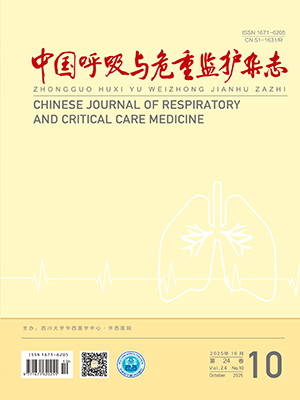| 1. |
Chung KF.Inflammatory mediators in chronic obstructive pulmonary disease.Curr Drug Targets Inflamm Allergy, 2005, 4:619-625.
|
| 2. |
Sharafkhaneh A, Hanania NA, Kim V.Pathogenesis of emphysema:from the bench to the bedside.Proc Am Thorac Soc, 2008, 5:475-477.
|
| 3. |
Han S, Stuart LA, Degen SJ.Characterization of the DNF15S2 locus on human chromosome 3:identification ofagene coding for four kringle domains with homology to hepatocyte growth factor.Biochemistry, 1991, 30:9768-9780.
|
| 4. |
Wang MH, Skeel A, Leonard EJ.Proteolytic cleavage and activation of pro-macrophage-stimulating protein by resident peritoneal macrophage membrane proteases.J Clin Invest, 1996, 97:720-727.
|
| 5. |
Wang MH, Zhou YQ, Chen YQ.Macrophage-stimulating protein and RON receptor tyrosine kinase:potential regulators of macrophage inflammatory activities.Scand J Immunol, 2002, 56:545-553.
|
| 6. |
Cowin AJ, Kallincos N, Hatzirodos N, et al.Hepatocyte growth factor and macrophage-stimulating protein are upregulated during excisional wound repair in rats.Cell Tissue Res, 2001, 306:239-250.
|
| 7. |
陈小菊, 王涛, 陈心容, 等.MSP对COPD大鼠肺泡巨噬细胞氧化应激和细胞因子产生的影响.求医问药, 2011, 9:172-173.
|
| 8. |
卫生部司政司.慢性阻塞性肺疾病诊疗规范(2011年版).中国医学前沿杂志(电子版), 2012, (1):69-76.
|
| 9. |
Bhatt AS, Welm A, Farady CJ, et al.Coordinate expression and functional profiling identify an extracellular proteolytic signaling pathway.Proc Natl Acad Sci USA, 2007, 104:5771-5776.
|
| 10. |
Bezerra JA, Carrick TL, Degen JL, et al.Biological effects of targeted inactivation of hepatocyte growth factor-like protein in mice.J Clin Invest, 1998, 101:1175-1183.
|
| 11. |
Zhao J, Hu L, Gong N, et al.The effects of macrophage-stimulating protein on the migration, proliferation, and collagen synthesis of skin fibroblasts in vitro and in vivo.Tissue Eng Part A, 2015, 21:982-991.
|




